On the 28th February 2009, I signed up for an organised visit to the Public Water Services (PWS) office by the Institution of Engineering and Technology (IET), Brunei. It was a visit of revelation as much information about the water that gets pump to our houses are shared. More delightful was the exclusive visit to their Telemetry Control Centre (TCC) and the Operations Control Centre (OCC). The TCC monitors and analyses water levels in the reservoirs, water flow through the pump stations and chambers. The OCC operates 24 hours to the calls and complaints of residents having problems with the water works. Recently, they have opened their lines to take in calls regarding other hazards besides those of water works such as landslides and flood. The coverage of this visit is found on the website of IET here.
The Civil Service Excellence Award (ACPA) Competition 2008 was awarded to the Public Water Services last year. And, I think I can see why now.
Before I go on with the pictures, I have some thoughts to share. You know, so much is being said about the many changes our country is undergoing and these comments are sometimes not very encouraging. I guess I am glad that the government offices are continually working to a better change though the results may not seem evident at this point on. While critics are important for improvement, I think it is equally important that we contribute towards this improvement. :)
The Civil Service Excellence Award (ACPA) Competition 2008 was awarded to the Public Water Services last year. And, I think I can see why now.
Before I go on with the pictures, I have some thoughts to share. You know, so much is being said about the many changes our country is undergoing and these comments are sometimes not very encouraging. I guess I am glad that the government offices are continually working to a better change though the results may not seem evident at this point on. While critics are important for improvement, I think it is equally important that we contribute towards this improvement. :)
The visit started with an informative presentation on the office. Below is a picture of our presenter from PWS.
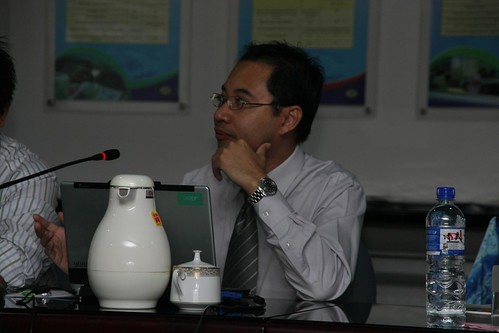

Our country's water is drawn from the Tutong River where a catchment area is allocated for this purpose. The water is then pumped into treatment centres where the water is made safe for domestic use. This is then pumped to terminal reservoirs which distributes the water to service reservoirs before they reach our homes.

An enginner from PWS explained to us the computer system the TCC uses. Using SCADA software solutions with the Geographic Information System (GIS), PWS could view the status of pumps, pump stations and reservoirs throughout the country comfortably from the centre. A fault can be quickly identified and traced using the system.
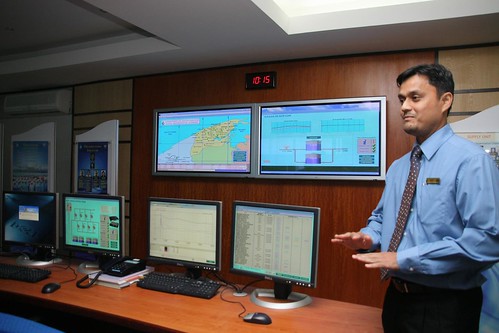
There is some sort of sensor in the reservoir which measures the depth of the water in it. This piece of information is then transmitted to the base station by radio waves, who then relays this message to TCC through the WAN of our country.
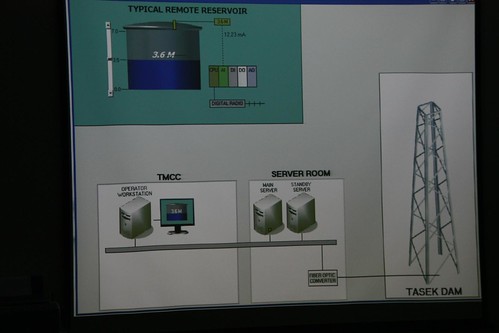
The picture below is of one of the computer screen showing a glimpse of what SCADA can do. It displays which pumps are in active and the water levels of the reservoirs that these pumps connect. System users can view the water pattern level by clicking on the reservoir diagram to obtain a graph view. In this view, records of water levels at different times can be studied.
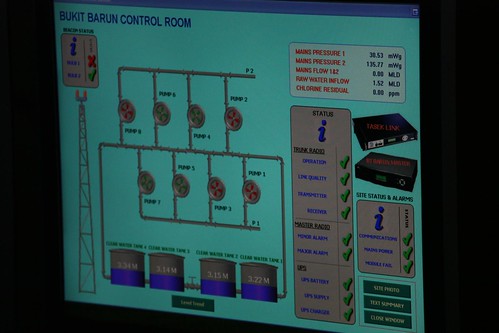
By clicking on any of the green dots, one can view the conditions of the reservoirs as seen on the picture above. The green dots indicate that the communication line is alright while signals are low in reservoirs with red dots.
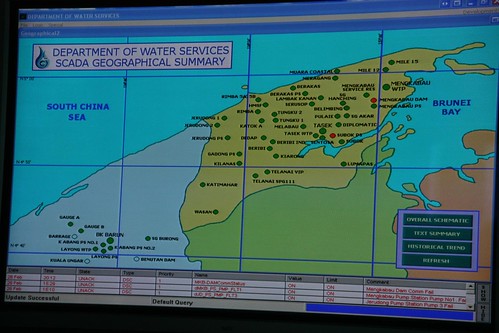
This picture shows the network of pipes that are connected to the different reservoirs in our country. Along the pipes, you will find boosters which regulates water flow and valves which are used for maintenance work. All of these information can be accessed through SCADA.

CCTVs are installed at the reservoirs and/or pump sites to ensure safety and security. What's so cool about this is that users can control the CCTV from the centre! As in like you can turn it 360 degrees to make sure all is clear around and you can zoom in to check on abnormal activities. For demonstration, they zoomed into a school and we could see the windows and doors!
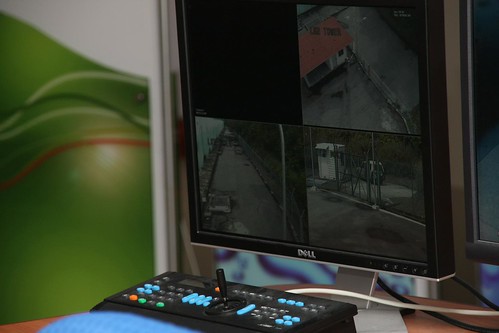
No doubt a computer solution of this scale relies on other tools and these are some of them.
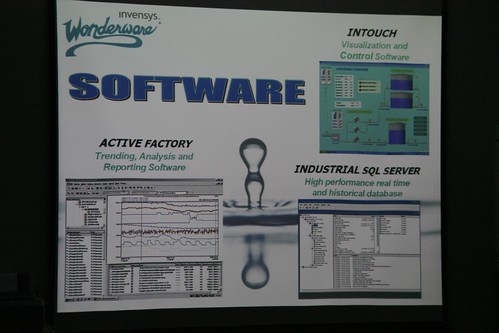
Some facts about the telemetry system:
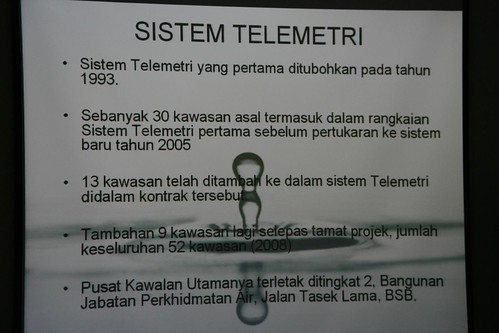
For a country of small population like ours, we sure have a lot of reservoirs.

And, there are more to come! We have enough water to sustain us for the next 10 to 15 years depend on usage. According to statistics, Bruneians are using 440 litres of water a day on average while neighbouring countries are using about HALF of what we use! If there is anything we need to learn at all, we really should learn to conserve and discipline our extravagence.
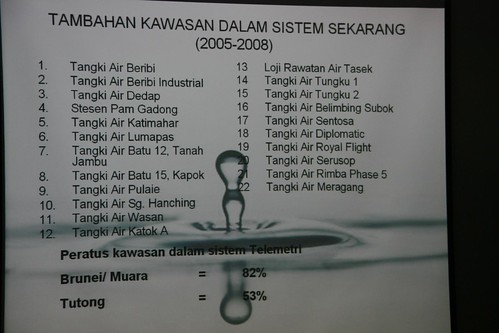
Here is the Operations Control Centre. The staff would take in calls from any residents pertaining to complaints, orders for blue tank and so forth. These are then typed into the system to be rectified.
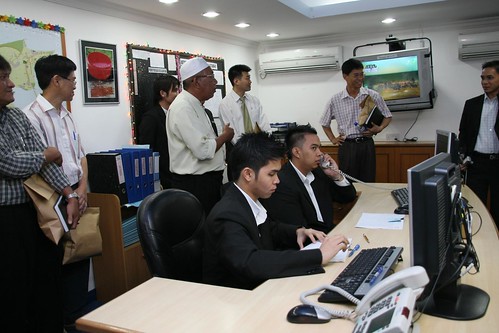

The software that is used is Maximo which records the complaints. The complaints are verified by correlating the information by callers with on-site information, which can be obtained from the TCC.
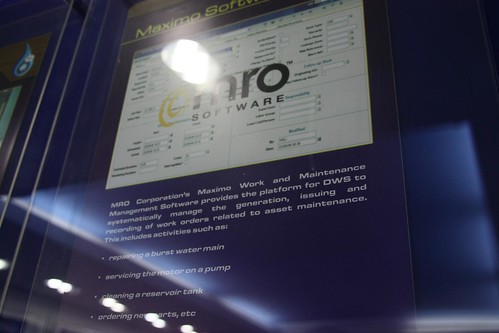
An OCC personnel explaining to us the flow of their operations
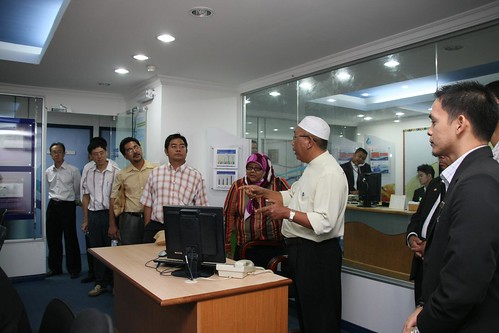
Operators are checking for faults as stated by callers. When the fault has been identified, maintenance work or repairs will be issued to the respective staff.
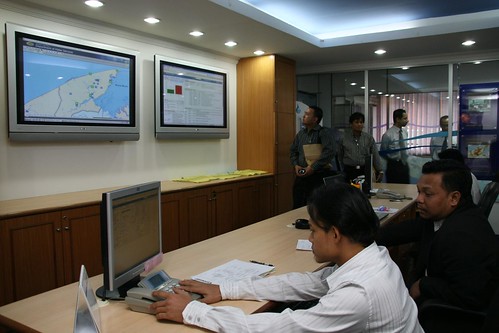
Using GIS to locate where the fault may have occurred.
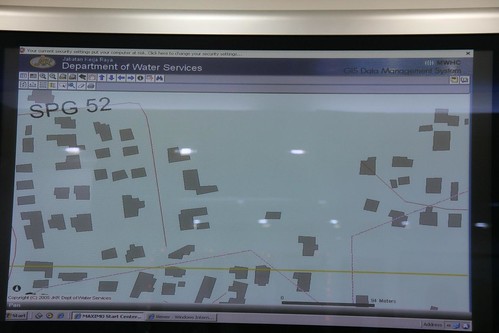
System showing a record of the complaints and rectified complaints where repairs has been done and completed.
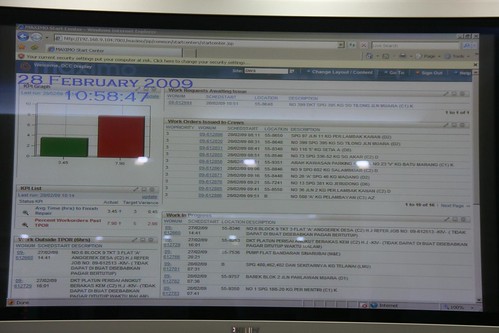
Lastly is just a picture of a biometric reader to control access to the centre.
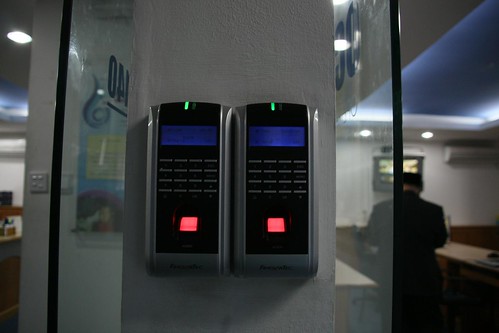
No comments:
Post a Comment